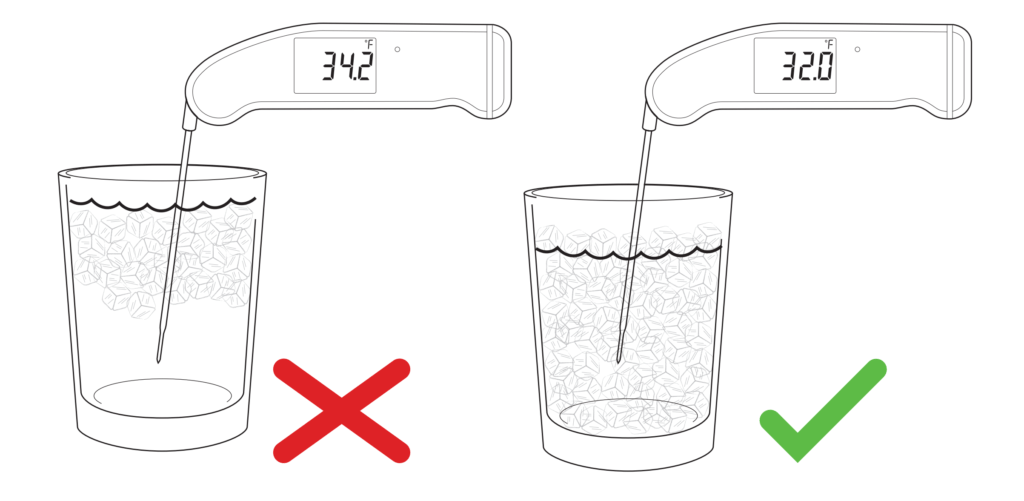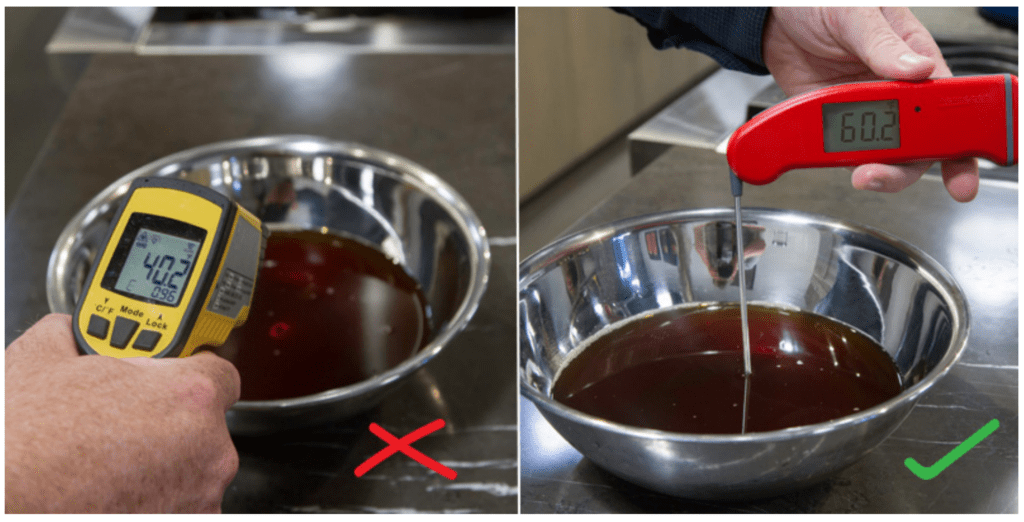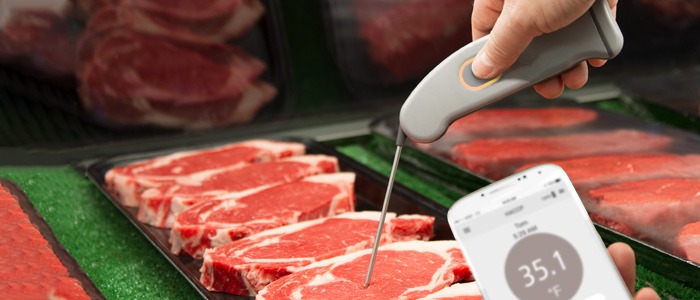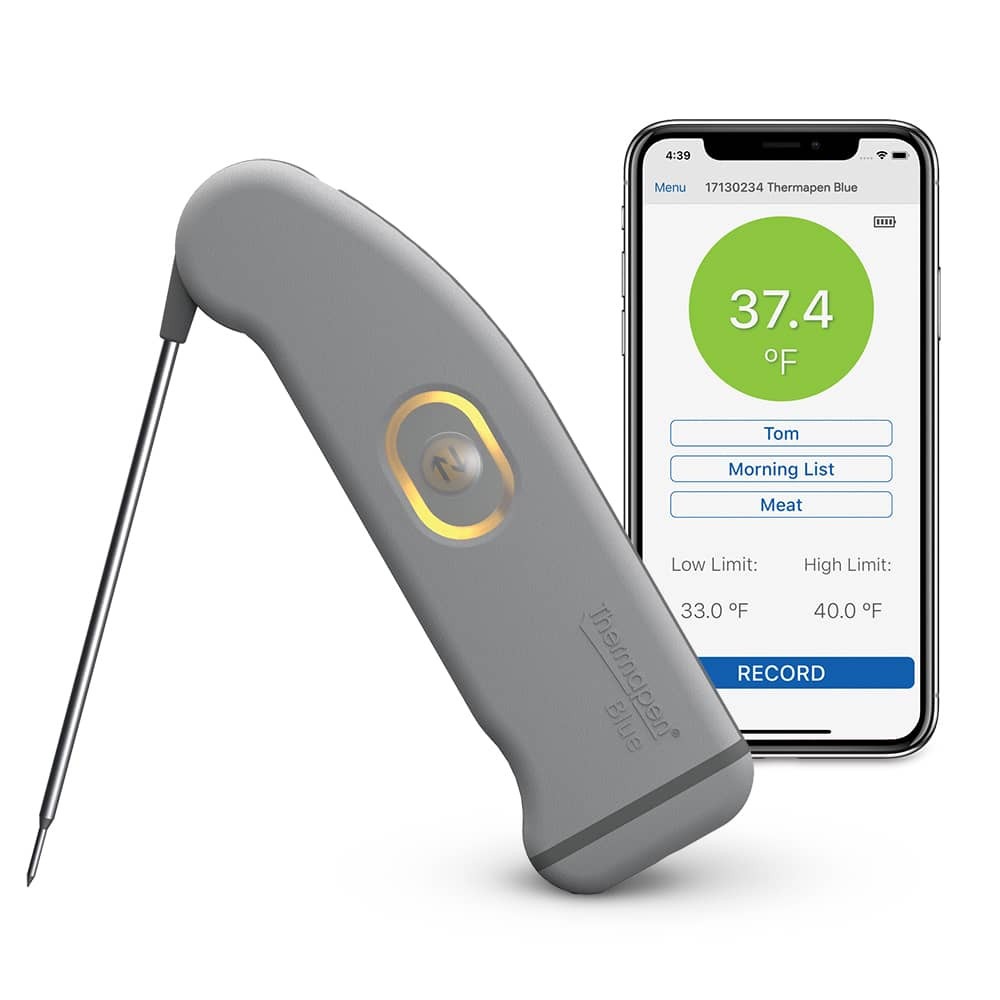The Top 5 Common Food Safety Mistakes
Closely adhering to the HACCP, ServSafe, and CFS food safety regulations, both for the quality of the food you serve and the safety of your patrons—not to mention the regulatory and legal protections that go with accurate HACCP records—is undeniably a huge responsibility, and of the utmost importance for all food service establishments. As we work with front-line outlets in the food service industry, we see the same food safety mistakes cropping up again and again. Here are some common food safety errors we’ve seen and how to avoid them in your facility.
Mistake #1: Testing A Thermometer’s Accuracy With An Improperly Made Ice Bath
If you’re not checking your thermometer’s accuracy the proper way, you may as well not be checking at all. The most common mistakes we see with ice-bath calibration checks include improper ice-to-water ratio, not sticking the probe far enough into the cup, neglecting to stir, and using the wrong type of ice. Small errors like these make a big difference. For instance, having too much water and not sticking your thermometer far enough into the bath: When ice is floating in a container of water (or other liquid), the temperature difference between the water at the top and bottom of the container can be as much as 20°F (12°C). But NIST says a proper ice bath should be within 0.01°C of the ice point—close enough for food safety. But, better yet, watch this short video or read this short blog post to become a pro ice bath tester.

Solution: Learn How To Make A Proper Ice Bath Test.
In a properly made ice bath, 1) the ice is resting on the bottom of the container, and 2) the water level at the top is slightly below the ice level. 3) Stir and let sit for a minute, and 4) stir the thermometer while performing the test. But, better yet, watch this short video or read this short blog post to become a pro ice bath tester.
Mistake #2: Using An Infrared Thermometer To Test Internal Temperatures
Infrared thermometers measure the infrared energy bouncing off the surface of an object to determine its surface temperature, never coming close to the thermal center of the food. When it comes to chicken or eggs or soup or any other kind of food you want to measure for food safety purposes, the surface of the food is almost always cooler than the center of the food because of evaporative cooling.* Meaning, you’re not coming anywhere close to an accurate internal temp reading when you’re using a thermometer that’s specifically made to measure surface temps. What you’re reading instead is a much cooler, outer layer, furthest away from the much warmer thermal center.
Solution: Use A Probe Thermometer To Measure Internal Temps.
* The surface may be warmer than the center if you are cooling a food from below.
For an accurate reading of the temperature of your food, use a penetration-probe style thermometer (like the Thermapen ONE) that you can insert into the center of the food—just make sure you’re using it properly! See below.

Mistake #3: Improper Use Of Probe Thermometer When Temping Non-Solids
Differences in temperature within the same medium are called “gradients.” Gradients exist in ovens, coolers, fridges, and solid foods like vegetables and chicken. The same is true with liquids and semi-liquids like salsa and soup. Whether they are cooking or chilling, different parts of foods heat up and cool down at different rates. If you just stick a probe thermometer into a Cambro of salsa that has been sitting all morning, for example, before stirring the salsa, you may be measuring the temperature of a cold spot or a hot spot, and you’ll never know which. The quick fix is to stir the salsa thoroughly before measuring its temperature. Stirring evens out the gradients and brings foods, liquids, and semi-liquids to a more uniform temperature. For extra credit, you can even stir your thermometer probe in the food while you take its temperature. Now you’ll know the actual temperature of the food. Note that if you stir a soup or other liquid thoroughly and measure its temperature immediately after stirring, you can actually use an infrared thermometer to check its temperature because evaporative cooling won’t have had time to set in (see Mistake #2).
Solution: Stir Foods Thoroughly Before Measuring Their Temperature.
The quick fix is to stir the salsa thoroughly before measuring its temperature. Stirring evens out the gradients and brings foods, liquids, and semi-liquids to a more uniform temperature. For extra credit, you can even stir your thermometer probe in the food while you take its temperature. Now you’ll know the actual temperature of the food. Note that if you stir a soup or other liquid thoroughly and measure its temperature immediately after stirring, you can actually use an infrared thermometer to check its temperature because evaporative cooling won’t have had time to set in (see Mistake #2).

Mistake #4: Improper Execution When Measuring Solids – Missing The Thermal Center
Because of those gradients, you want to be sure you measure the thermal center of a food with your thermometer. This can be a challenge with dial thermometers (with sensors up to two inches long) or slow digital thermometers (that take more than 5 seconds to reach an accurate reading). But with a fast and accurate digital thermometer, you can pull the probe tip through food and simply look for the lowest number on the display if you are cooking food or look for the highest number on the display if you are cooling food. This extreme temperature will be the thermal center and one of your critical control points (read more about finding the thermal center of the steak, for example, here).
Solution: Pull The Probe Tip Through The Food And Look For The Lowest Reading.

Mistake #5: Human Error On Paper HACCP Logs
We live in a digital age, yet many are still using paper HACCP logs. Paper HACCP logs are subject to damage and even fabricated readings when someone doesn’t feel like actually taking temperatures.
Solution: Go Digital
ThermoWorks has dozens of different digital solutions that will make your paper logbooks go away while providing clear, organized, and actionable data. Instead of a mundane task, you can have lifesaving, brand-protecting, meaningful data with alerts. With our Thermapen Blue or Saf-T-Log, for example, not only will your employees need to actually take a temperature to record a checklist item, but when the health inspectors come, you will be able to show them your neatly organized daily reports.





Good afternoon,
I teach high school culinary arts and I think your website is great.
The information you provide is spot on and the graphics are understandable.
Do you offer any resources for teachers like me
I’d be interested in any types of posters or flyers you might have.
Thank you,
Christopher Burgos
Glad you liked the article Christopher. Here’s a link to the poster! https://www.thermoworks.com/food-safety-poster-download They are also available for purchase on the main site. Have a good day.
Hello, any discount for Culinary Students?
Thank you.
Yes! Contact our Customer Care team for more info.
Maybe a silly question, but can you put the ThermoWorks meat thermometer into the dishwasher?
No! it’s waterproof, but it’s not meant for that kind of water work!